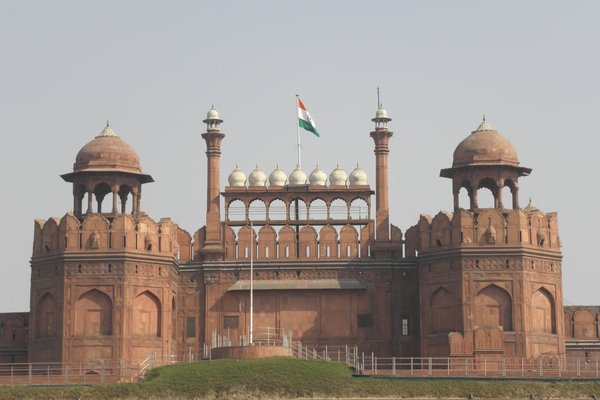India
Red Fort
The Red Fort Complex is an ambitious expression of Mughal architecture and a testimony to the later British military use of the forts.
It was built in the mid-17th century and became a symbol of the power of the Mughal emperor Shah Jahan. In its architecture and garden design, Islamic, Persian, Timurid and Hindu traditions were combined. After 1857 the site was used as the headquarters of the British Indian Army. They introduced new colonial-style buildings and functions over the earlier Mughal structures. It was also the place where Indian independence was first celebrated and is still celebrated today.
Community Perspective: The most majestic of all sights in Delhi. The more interesting structures are at the back of the complex. Carlo has listed several sights to visit.
Site Info
Official Information
- Full Name
- The Red Fort complex (ID: 231)
- Country
- India
- Status
-
Inscribed 2007
Site history
History of Red Fort
- 2007: Inscribed
- Inscribed
- 1993: Referred
- Bureau - Better nomination documentation etc required
- Type
- Cultural
- Criteria
- ii
- iii
- vi
Links
- UNESCO
- whc.unesco.org
- Official
-
- asi.nic.in — Archaeological Survey of India
All Links
UNESCO.org
- whc.unesco.org — whc.unesco.org/
Official Website
- asi.nic.in — Archaeological Survey of India
News Article
- Jan. 28, 2021 bbc.com — Farmers breach Delhi's Red Fort in huge tractor rally
- June 19, 2008 timesofindia.indiatimes.com — 400-vehicle parking lot at Red Fort soon
- Dec. 5, 2007 expressindia.com — The road rises in Red Fort, dwarfs world heritage
- Nov. 28, 2007 telegraphindia.com — The culture ministry and the Archaeological Survey of India are again at odds over Ram and damage to heritage sites.The issue is culture minister Ambika Soni's permission to bring Ramlila back to the Red Fort grounds five years after the ASI had succeeded in banishing the annual ceremony off the world heritage site's greens.
Community Information
- Community Category
- Secular structure: Military and Fortifications
Travel Information
One million visitors or more
Recent Connections
-
In Video Games
Civilization VII -
Located in a Capital City
Part of the National Capital Territory … -
Ten years or more to inscribe
1993 - 2007
Connections of Red Fort
- Individual People
-
-
Lord Curzon
Large parts of the Red Fort were destroyed and/or looted by the British after the Indian Rebellion of 1857. Curzon initiated some restoration, often via the creation of gardens, but most significantly that of the Diwan-i-Am for which Curzon "ordered that the panels be brought back from Kensington Museum and reinstalled in the Red Fort, for his Durbar, which was to be held in 1903....... Additionally, all of the panels weren’t present to be restored, and therefore new panels were put in their places using the same stones, made by European artists. The restoration work was completed in 1909, and what we see in the Diwan-i-Am today is the result of Lord Curzon’s attempt to hide the “vandalism of an earlier age”...." -
Gertrude Bell
Photo taken 29 December 1902 -
Shah Jahan
Shah Jahan commissioned the construction of the Red Fort in 1638 when he decided to shift his capital from Agra to Delhi. (wiki)
-
- Geography
-
-
Ganges Basin
On banks of Yamuna River (joins the Ganges at Allahabad) -
Located in a Capital City
Part of the National Capital Territory of Delhi (Capital of India)
-
- Trivia
-
-
Google Doodles
15 August 2011, India Independence Day 2011See www.google.com
-
On Banknotes
500 rupees 2016See en.wikipedia.org
-
Red Fort
-
In Video Games
Civilization VII -
Sound and Light Show
-
One million visitors or more
over 2.1 million visits in fiscal year 2023 // 2,101,000 (2006) -
Built or owned by British
contains many British military buildings
-
- History
-
-
Thomas Cook Round the World tour 1872-1873
c Feb 1873 "Delhi is one of the most interesting places in India, and its interest to English visitors was greatly augmented by the events of 1857. The great fort, encircling the late King's Palace; the rich marble structures of the Palace, baths, and harem; the pedestal on which stood the famed peacock Throne; the Great Mosque..." -
Coronation Locations
(Delhi) Aurangzeb 1659 -
Located in a Former Capital
Capital of Mughal Empire (1649-1857) -
Mughal Empire
"The planning and design of the Red Fort represents a culmination of architectural development initiated in 1526 AD by the first Mughal Emperor" (OUV) -
Eunuchs
See know.burrp.com
-
Fusion
"fusion of Islamic, Persian, Timurid and Hindu traditions"
-
- Architecture
- Damaged
-
-
Terrorist Attacks
By militants of the Lashkar-e-Taiba on December 22 2000 (2 dead)
-
- World Heritage Process
-
-
Ten years or more to inscribe
1993 - 2007 -
Already inscribed still on T List
Part of Delhi - A Heritage City and Grand Trunk Road TWHS
-
- Religion and Belief
-
-
Sikhism
Captured by Sikhs. - "On 11 March 1783, when the Sikhs entered the Red Fort in Delhi and occupied the Diwani-Am, the Mughal emperor, Shah Alam II, made a settlement with them agreeing to allow Baghel Singh to raise gurdwaras on Sikh historical sites in the city" Wiki) -
Notable mosques
Moti Mosque
-
- Constructions
-
-
Bazaars and Market Halls
Chhatta Chowk and Meena Bazaar in the Red Fort Complex -
Stepwells
"The discovery of a Tughlak era baoli in the Red Fort has been the subject of much debate. How come a 14th Century step-well exists in a fort built by Shah Jahan in the 17th Century? Baffling for some but it must be remembered that the Red Fort was built on the ruins of an old Afghan fort....." For more see -
Thrones
"The Throne of Jahangir (...) was built by Mughal emperor Jahangir (...) in 1602 and is located at the Diwan-i-Khas (hall of private audience) at the Red Fort in Agra."See en.wikipedia.org
-
Harem
"The Mumtaz Mahal, or Palace of Jewels, is the former harem of the Red Fort of Delhi.. Today it is converted into the Red Fort Museum of Archaeology"
-
- Timeline
-
-
Built in the 17th century
1639-1648
-
- WHS Hotspots
- Visiting conditions
-
-
Foreigner prices
Citizens of India and visitors of SAARC (Bangladesh, Nepal, Bhutan, Sri Lanka, Pakistan, Maldives and Afghanistan) and BIMSTEC Countries (Bangladesh, Nepal, Bhutan, Sri Lanka, Thailand and Myanmar) - Rs.30 per head. Others: Rs. 500/- per headSee asi.nic.in
-
- Literature & Film
-
-
Tintin
Tintin in Tibet -
Location for a classic movie
Gandhi (1982, Best picture at Academy Awards, best film at BAFTA)
-
News
- bbc.com 01/28/2021
- Farmers breach Delhi's Red Fort in…
- timesofindia.indiatimes.com 06/19/2008
- 400-vehicle parking lot at Red For…
- expressindia.com 12/05/2007
- The road rises in Red Fort, dwarfs…
Recent Visitors
Visitors of Red Fort
- AC
- Adrian Turtschi
- Afshin Iranpour
- aj
- akacesfan
- Alberto Rodriguez Gutierrez
- Alexander Barabanov
- Alexander Lehmann
- Alexander Parsons
- AlexSchedel
- Alikander99
- Ali Zingstra
- Allegrazwindow
- A. Mehmet Haksever
- Ammon Watkins
- AmyAbroad
- andyng-site
- Angela Vandyck
- Anna Wludarska
- Artur Anuszewski
- ashombob
- Atila Ege
- Bamse
- bergecn
- Bernard Joseph Esposo Guerrero
- Bill Maurmann
- Bin
- BMuramatsu
- Boj
- Bram de Bruin
- brendairala
- campmany
- Carlo Medina
- Carlo Sarion
- Chalamphol Therakul
- Cheryl
- Chinmaya
- Chole Ross
- Christer Sundberg
- Christravelblog
- Claire Bradshaw
- Clyde
- Corinne Vail
- Cyberczar
- CynthiaSam
- czesioszpachelka
- Daniel Gabi
- Danny L
- David Marton
- Dimitar Krastev
- DjhMck
- Dorejd
- DouglasR
- Elis
- Elisabeth Fransisca Situmorang
- Els Slots
- Erfe91
- Eric Lurio
- Fan Yibo
- Fede1203
- fedemarch92
- Felicité
- Fernweh
- Filip Murlak
- Folkokovic
- Francky D'Hoop
- Frederik Dawson
- futtaimhb
- Garrett
- Gary Arndt
- Geert Luiken
- George Gdanski
- GerhardM
- Gernot
- Gilles
- giulio25
- Grzegorz Andruszkiewicz
- Hadrianus
- Harald T.
- Harry Mitsidis
- H Beswick
- Hdwilsonau
- Hurrvinek
- Iain Jackson
- Jacob Choi
- Jacob Otten
- Jakubmarin
- janis
- Janos
- Jarek Pokrzywnicki
- Javier
- Javier Coro
- Jawnbeary
- Jean Lecaillon
- Jeanne OGrady
- Jeffrey Chai
- Jezza
- JL
- J_neveryes
- Joel on the Road
- John Smaranda
- Jon Opol
- Jonoprout
- Joyce van Soest
- jxrocky
- Karito Vies
- KateY
- KeithBailey
- Ken DJ
- Kerékgyártó
- Kevin Padley-Knight
- Kjlauer
- Knut
- Kurt Lauer
- La Concy
- Lado Joel
- Lameduck99
- Lara Adler
- LaVale
- Lembu
- leroykstlj
- Liamps91
- lichia
- Linz
- Little Lauren Travels
- Loic Pedras
- Lucas Del Puppo
- Lucio
- Ludvan
- Luis Filipe Gaspar
- Lukasz Palczewski
- Luke LOU
- Maciej Gil
- Maciej Gowin
- Mahuhe
- Malgorzata Kopczynska
- marcel staron
- MarcoB_0
- Marcobrey
- Marlies van Wolfswinkel
- Martin
- Marton Kemeny
- Mateusz
- Matthewrw
- Matthewsharris
- MaYumin
- mg:1
- Mia esguerra
- Mihai Dascalu
- Mikko
- Milan Jirasek
- Miloš Tašković
- MMM
- Monica Tasciotti
- montgomw
- Morodhi
- Mstrebl1990
- MWaters66
- Naim Y
- nan
- Niall Sclater
- Nihal Ege
- Olli-Pekka Turunen
- PabloNorte
- Patrik
- Patrik_globe
- Paul Schofield
- peacemaker2142
- Peltzi
- PeterA
- Petteri
- Philipp Leu
- Philipp Peterer
- phillipmeng
- Pieter Dijkshoorn
- Pink Bunny
- Piotr Wasil
- Potsdamer
- Pradip Tripathy
- Priyaranjan Mohapatra
- Qin Xie
- RainbowMarbles
- Ralf Regele
- Randi Thomsen
- Reza
- Riccardo Quaranta
- Rick Ohm
- Rob Wilson
- Roger Ourset
- Roman Bruehwiler
- Roman Raab
- Sandra!
- Sergio Arjona
- Shandos Cleaver
- Shombob
- Simonf
- Solivagant
- Stanislaw Warwas
- stephanvermeulen
- Sutul
- Svein Elias
- SymonMajewski
- Szabolcs Mosonyi
- Szucs Tamas
- Tamara Ratz
- Tammy Gouldstone
- Taotao Chen
- Tarquinio_Superbo
- Tevity
- TheTravelingRanger
- Thomas Buechler
- Thomas van der Walt
- Tim Allen
- Timonator
- Timothy C Easton
- TimPick
- tony0001
- Tony H.
- Truls Brekke
- Twobaconsandaboston
- usagi1974
- Vernon Prieto
- Vincent Cheung
- voyager
- Waxwing
- Wimmy
- Wojciech Fedoruk
- Wo_ko
- Xiquinho Silva
- Zoë Sheng
- Zos M
- ZZSong
Community Reviews
Show full reviews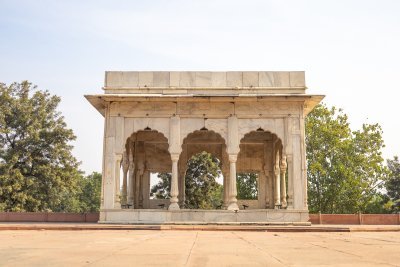
Three reviews out of 400 visitors, with the last review written more than a decade ago… Surely, the Red Fort Complex deserves better, given how important and popular this site is (emphasis on the word ‘popular’). Although I visited the site both in Dec 2013 and Dec 2023, this review is based mostly on my second visit.
Inside the Red Fort
Shah Jahan, the Mughal Empire’s 5th emperor, founded Red Fort (aka Lal Qila) to serve as his fancy residential palace-fort, only to be later imprisoned by his son Aurangzeb in Agra Fort. The fort later became a British military garrison and is now a crowded tourist site with museums that hold art exhibitions such as the India Biennale, which was quite enjoyable and ate up half of the time we were there.
Many of the interesting structures in the Red Fort are located on the eastern side of the complex, while most of the real estate is grass parks dotted with trees. Excluding the time spent purchasing the ticket or visiting the Kranti Mandir museums, I reckon no more than 2 hours is enough to explore the area. While I suggest checking out all of the historic structures in the complex, I found a few that are important, interesting, and worth a visit:
- Lahore Gate - This is the gate where tourists enter. It is what you'd usually see as the postcard photo of the Red Fort, remarkable for the two towers that flank …
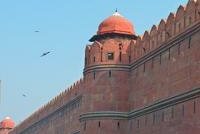
This WHS is very similar to the red Agra Fort and could be quite confusing to discern when trying to recall both experiences. However, the Red Fort in Delhi is truly a national and worldwide heritage site and encloses several buildings, palaces, courtyards and gardens within its walls. I visited this WHS in January 2012.
Keep reading 0 comments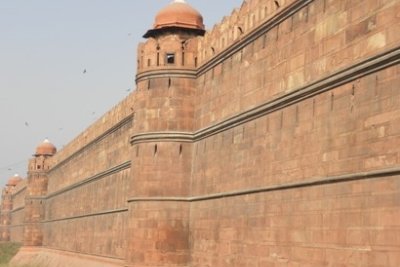
Forts are among my least favourite WHS, and this one is no exception. To do it justice I have to say that it is much more than a fortress - It reminded me of the Forbidden City, with its endless rows of gates and audience halls, built to impress.
The more interesting structures are at the back of the complex after you have suffered the queue at the security gate (well, not much of it at the Ladies' entrance) and the souvenir stalls at Chhatta Chowk. These structures at the back are all made out of white marble. I especially liked the Hammam.
I arrived here with Delhi's Hop on Hop off Bus - an easy way to reach all 3 Delhi WHS in one day. At least - that's what I thought until I learned that the full circuit takes 4 hours to complete. And that is only the bus ride, sight visits of about 1 - 2 hours not included. So after Qutb Minar, Jantar Mantar and the Red Fort I decided to stop my efforts and returned "home" effortlessly by metro.
Keep reading 0 comments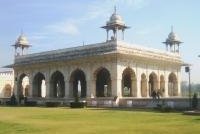
Lal Qila – The Red Fort – with its mighty red walls that extends for over 2 km is for sure the most important and majestic of all sights in Dehli. Construction was begun in 1638 by the mighty Mughal emperor Shah Jahan and was completed 10 years later.
With its gates, palaces, bazaars, gardens, fountains and pavilions its and eloquent reminder of the glory of the Mugal era and its magnificence simply leaves one awestruck. It’s a calm haven of peace which helps one to break away from noisy and busy life outside the walls of the Fort, and transports the visitor to another realm of existence.
And after having dreamt yourself away to another age and time you can return to the present at the little Tea House, were you quickly realize that you’ve been taken for a ride when receiving the bill..!
Keep reading 0 comments
